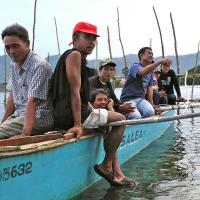August 26, 2025
Q&A with Dr. Heather J. Lynch: How Antarctic Penguins Reveal the Health of their Ecosystem
BY: Jessica McLean
Oceana sat down with Dr. Heather J. Lynch to learn more about her work with Antarctic penguins and the important role they play in the Antarctic ecosystem. Dr. Lynch studies penguins and other Antarctic seabirds to understand and track how the broader Antarctic ecosystem is responding to the effects of climate change, fishing, and tourism.
WHAT CAN PENGUINS TELL US ABOUT ANTARCTIC HEALTH?
Penguins play a crucial role in helping scientists study Antarctic krill, a key bioindicator species found in the Southern Ocean. The gentoo penguin, Adélie penguin, and the chinstrap penguin are the three main species studied by our team on the Antarctic Peninsula. None of these species are at imminent risk of extinction, so it’s not that we are worried about their conservation, per se. Instead, we focus on these animals because they are easily surveyable members of the ecosystem that are greatly reliant on krill as a food source. So, studying the population and movement of these penguins can give us a huge amount of information about the abundance of krill.
WHY IS KRILL IMPORTANT TO STUDY?
Krill serves as a key indicator species for the health of Antarctica’s ecosystem. This is due to their sensitivity to environmental changes — especially sea ice, high level of abundance, and crucial role as the primary food source for many Antarctic animals. As the base of the Antarctic food web, if krill decrease in numbers, so will the penguins, whales, seals, and other animals reliant on them for nourishment.
CAN YOU TELL US A BIT ABOUT THE KRILL INDUSTRY?
Krill are harvested for use in human dietary supplements and are mixed into aquaculture feed. The penguins we study are highly reliant on krill for food, so naturally, they compete with local fishers. Fortunately, krill companies have agreed to no-take buffer zones around krill-eating penguin colonies during their breeding seasons. Additionally, krill fishers share catch data — enabling scientists to understand what is being caught at scale. As a highly regulated area, the Antarctic is a unique example of how scientific research paired with fishing transparency can yield sustainable outcomes for fisheries and marine ecosystems alike.
HOW CAN YOU TELL RISING TEMPERATURES ARE AFFECTING PENGUINS?
Because we were already surveying penguins in the region, we noticed an unusual phenomenon — king penguins are beginning to move deeper into the Antarctic. The issue here is that king penguins are native to a collection of islands in the sub-Antarctic region and off southern South America. They are the second largest species of penguin — they breed in enormous colonies consisting of hundreds — sometimes thousands — of penguins. As they continue to move into the Antarctic region, they could have a significant impact on the local environment and ecosystem. But invasive king penguins haven’t been too successful just yet — while Antarctica may be at warmer temperatures most of the year, winter cold fronts still come through — making it so their young can’t survive. If we weren’t already monitoring penguins, we wouldn’t know of this new phenomenon. But now we see the range of king penguins shifting in real time as the Antarctic gets warmer.
HAVE YOU NOTICED THE PRESENCE OF PLASTICS?
Yes, plastics are being found everywhere, even Antarctica — I once saw a chinstrap penguin incubating a 20-ounce plastic bottle as if it was its own young. It has been found in the water, washing ashore, and inside marine animals. My team of scientists at the Lynch Lab and I are working to trace the flow of plastic pollution into Antarctica and discover the source.
Although the penguins may feel far away and the Antarctic a distant world, we have one ocean. It all connects. The best thing that people can do to save penguins is to fight to keep oil, pollution, and plastics out of our oceans for good.
LEARN MORE
To learn more about Dr. Lynch’s research, visit http://www.lynchlab.com .
Interested in learning more about Antarctic features like sea ice and creatures like penguins, seals, and polar bears? Take a dive into Oceana’s Marine Life Encyclopedia!
Oceana works to protect marine life and habitats around the world. Our campaigns to stop plastic production at the source and protect vital marine habitats would allow ecosystems like the Antarctic to flourish.



